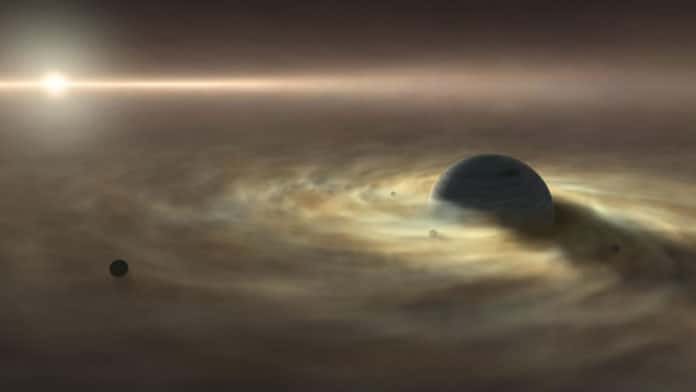A few components have been proposed to clarify the formation process of satellite systems, and moderately massive moons are believed to be born in circumplanetary disks.
Scientists in a new study aimed to find a way to form a system with a single large moon, such as Titan around Saturn. For that purpose, scientists examined the orbital migration of moons, which change their direction and speed depending on the properties of circumplanetary disks.
According to astronomers, may large moons in the solar system formed from the gas and dust spinning around the still developing planet. But, past simulations have resulted in either all large moons falling into the planet and being swallowed up or in numerous large satellites remaining. The circumstance we see around Saturn, with multiple small moons yet just one large moon, doesn’t fit in both of these models.
For this study, scientists created a new model of circumplanetary disks with a more realistic temperature distribution by considering multiple sources of opacities, including dust and ice. They later simulated the orbital migration of moons considering pressure from disk gas and the gravity of other satellites.
Their simulations show that there is a “safety zone” where a moon is pushed away from the planet. In this area, the gas inside the orbit pushes the satellite outward and keeps it from falling into the planet.
Yuri Fujii, a Designated Assistant Professor at Nagoya University, said, “We demonstrated for the first time that a system with only one large moon around a giant planet could form. This is an important milestone to understand the origin of Titan.”
Masahiro Ogihara, a Project Assistant Professor at the National Astronomical Observatory of Japan (NAOJ), said, “It would be difficult to examine whether Titan experienced this process. Our scenario could be verified through research of satellites around extrasolar planets. If many single-exomoon systems are found, the formation mechanisms of such systems will become a burning issue.”
These results were published in Astronomy and Astrophysics Letters in March 2020.
